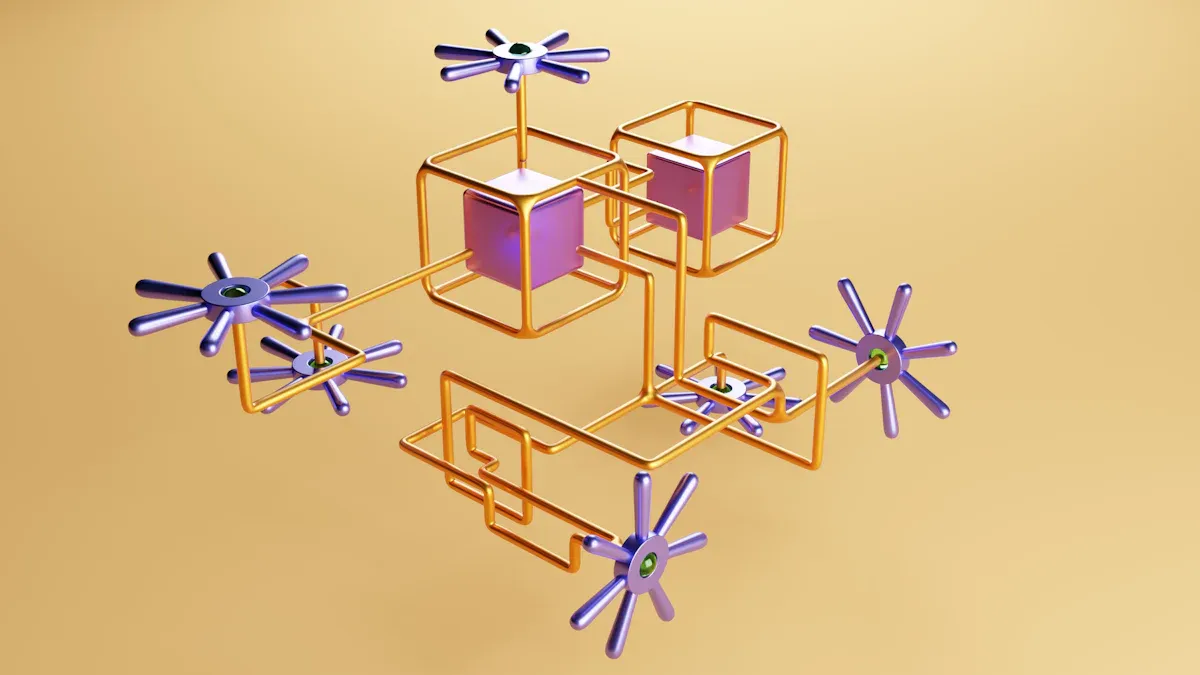Best FPC solutions usually help more users than Allflex solutions. Experts know Best FPC for its great flexible connectivity, better materials, and steady results. These solutions give more trust for hard projects. Many engineers pick Best FPC when they need exact work and strong parts. Companies that want to grow and need good solutions often pick Best FPC instead of flex solutions.
Key Takeaways
- Flex solutions are good for simple electronics with low cost. They work best when you need only a few layers. The designs are easy to make. Best FPC solutions use stronger materials for more layers. They are great for hard projects that must last a long time. Best FPC gives expert help and checks for quality. This helps stop problems and makes products last longer. You should choose based on what your project needs. Use flex for fast and cheap jobs. Use Best FPC for important and hard electronics. Best FPC uses strong bonding adhesive. This keeps circuits safe from heat, bending, and chemicals. It helps them last longer.
Quick Comparison
Key Points
| Factor | Flex Solutions | Best FPC Solutions |
|---|---|---|
| Flexibility | High | Very High |
| Cost | Lower for simple designs | Competitive for complex designs |
| Materials | Standard polyimide, basic adhesives | Advanced polyimide, premium adhesives |
| Layers | 1-4 layers typical | Up to 10+ layers possible |
| Turnaround | Fast for basic flex pcb | Fast for both simple and complex flex pcb |
| Typical Applications | Consumer electronics, LED strips, basic flex pcb | Medical devices, aerospace, automotive, high-reliability flex pcb |
Best FPC solutions are great for projects that need strong and safe flex pcb technology. They use better materials and can have more layers. This makes them good for things like airplanes and medical tools. Flex solutions are good for easy flex pcb jobs, like LED strips or simple gadgets.
At a glance:
- Pick flex solutions if you want to save money and only need a few layers in your flex pcb.
- Pick Best FPC solutions if you need many layers and want your flex pcb to work well and last long.
Flex Solutions Overview

Features
Flex solutions use flexible printed circuits in electronics. These circuits connect parts in small spaces. Engineers like that these circuits can bend and twist. FPC technology helps make thin and light products. Most flex pcb solutions use polyimide as the main material. Polyimide can handle heat and odd shapes. Making flex pcb uses special steps to build twisty circuits. These circuits can move many times and not break. Flexible printed circuit boards often have one to four layers. This keeps simple projects cheap.
Manufacturing teams pick flex pcb for design freedom. They can put circuits in small or weird-shaped items. FPC manufacturing means fewer big wires are needed. This makes devices lighter and more dependable. Making flex pcb needs careful layering and cutting. Each step checks that the product is high quality. Electronics companies use flex pcb manufacturing for fast and steady results.
Note: Flex solutions are best for projects that do not need lots of layers or super strong parts. BESTFPC has better choices for tough jobs.
Flex PCB Applications
Flex pcb is used in many electronic products. Consumer electronics like phones and tablets use flexible printed circuits inside. These circuits save space and help devices work better. FPC is also used in LED lights for cool shapes. Many medical devices use flex pcb for sensors and monitors.
Car makers use flexible printed circuit boards for dashboards and sensors. FPC manufacturing helps make flexible circuits for airplanes. These jobs need light and strong parts. Flex pcb manufacturing lets teams change designs fast. Electronics makers like flex solutions because they are useful and save time.
Best FPC Solutions
Features
Best FPC solutions are special in electronics. They use better materials and check quality closely. Engineers pick these for jobs that must be very reliable. Best FPC’s fpc can handle heat and chemicals well. This makes them good for tough places. The company uses top polyimide films and strong adhesives. These help the fpc last longer and work better.
Manufacturers can pick from many layer choices. Best FPC can make fpc with ten or more layers. This lets them build hard circuit designs. The fpc fits in small or strange spaces. Teams can make products lighter and thinner. Best FPC also works fast, even for custom orders. Their steps make sure each fpc is high quality.
Best FPC solutions help companies feel safe. They know the fpc will work well, even in hard places.
Rigid-Flex Circuits
Rigid-flex circuits mix two types in one fpc. They have both stiff and bendy parts together. This helps engineers make things that need both strength and bending. Best FPC is a leader in making these circuits. The stiff parts hold heavy pieces. The bendy parts let the fpc move and fold.
Many fields use rigid-flex fpc for hard jobs. Medical tools, planes, and cars all use this tech. The fpc can bend many times and not break. This helps the product last longer. Best FPC uses careful steps to join stiff and bendy layers. Each fpc gets checked before it ships.
- Rigid-flex fpc means fewer connectors are needed.
- It saves space and weight in the device.
- The design makes the device work better and break less.
Best FPC keeps leading in fpc quality and new ideas. Their solutions help companies make safer and better products.
Comparison
Performance
Performance is very important for electronic systems. Best FPC solutions are very reliable because they use better materials and check quality carefully. Their flex pcb uses top polyimide films and strong fpc bonding adhesive. These help the fpc handle heat, chemicals, and lots of bending. Best FPC can make flexible printed circuits with up to ten layers. This lets them support hard designs and fast signals.
Flex solutions are flexible and work well for simple things. Most flex pcb from these use normal polyimide and basic adhesives. They usually have one to four layers. This makes them good for easy flexible circuit needs. But they may not be as reliable or high quality as Best FPC in tough places.
Best FPC is known for always being high quality and reliable. Their fpc bonding adhesive and careful checks make sure each flex pcb is made right.
Cost
Cost is important when picking between flex solutions and Best FPC. Flex solutions usually cost less for easy projects. Their flex pcb manufacturing uses fewer layers and normal materials. This keeps prices low for things like consumer electronics or LED strips.
Best FPC solutions are a better deal for hard jobs. Their strong fpc bonding adhesive and many-layer flex pcb manufacturing help with tough needs. The first price may be higher, but you save money later because there are fewer problems and less fixing. Companies that need special or very reliable flexible printed circuits often save money over time with Best FPC.
- Flex solutions: Cheaper at first for easy designs.
- Best FPC: Better deal for hard or important jobs.
Scalability
Scalability is important when companies want to get bigger or do more. Best FPC solutions are great for this. Their manufacturing can handle big orders and special designs. They can make more flex pcb without losing quality. Their fpc bonding adhesive and quality checks keep every batch the same.
Flex solutions are good for small jobs or simple products. But they may have trouble with big orders or hard flexible circuit designs. Their ways may not work for as many layers or special materials as Best FPC.
Companies that want to grow or need to make more should look at Best FPC for their flexible printed circuits.
Support
Support helps projects go well and last a long time. Best FPC gives strong technical support and advice. Their team helps with design, picking materials, and fpc bonding adhesive. They give tips on flex pcb manufacturing and quality checks. This support helps customers avoid mistakes and get good results.
Flex solutions may give basic help for normal products. Their teams can answer easy questions about flex pcb or flexible circuit use. But they may not give as much expert help or special answers as Best FPC.
| Feature | Flex Solutions | Best FPC Solutions |
|---|---|---|
| Performance | Good for simple jobs | Excellent for complex jobs |
| Cost | Low for basic designs | Competitive for advanced |
| Scalability | Limited | High |
| Support | Basic | Expert, comprehensive |
Best FPC is the leader in support, quality, and reliability. Their focus on fpc bonding adhesive, quality checks, and advanced manufacturing makes them the best pick for hard projects.
Pros and Cons
Allflex Solutions Pros
- Flex solutions are quick and easy to make for electronics. Teams use flex pcb in small gadgets because it bends and fits tight spots. The price is low for simple designs, so companies save money. Flex pcb is good for things that do not need many layers or super strong parts. Many companies pick flex solutions for fast jobs and easy building.
Tip: Flex solutions are great if you need a flexible circuit but do not need fancy features.
Allflex Solutions Cons
- Flex solutions use normal materials, so they might not last long. Flex pcb does not have many layers, so hard designs are tough to make. Making them may skip strict checks, so they might not always be reliable. Flex solutions may not stand up to heat or chemicals like better options. Help with design or making questions is usually simple.
Best FPC Pros
- Best FPC uses better materials and strong adhesives in every fpc. Their way of making fpc can use ten or more layers, so hard designs are possible. Teams trust Best FPC because it works well and lasts a long time. They check quality at every step, so each fpc is made right. Best FPC gives expert help with design, materials, and making fpc.
Note: Best FPC is special because it cares about quality, being reliable, and using advanced ways to make fpc.
Best FPC Cons
- Best FPC can cost more at first than basic flex solutions. Making custom fpc can take longer because of extra steps. Some easy projects do not need the extra features or high reliability that Best FPC gives.
Use Cases
When to Choose Flex Solutions
Flex solutions are good for simple and cheap circuits. Many engineers use them in things like remote controls or LED strips. These circuits fit into small spaces and can bend easily. Teams pick flex solutions for electronics that do not need many layers or special features.
Manufacturers like flex solutions for fast production. They help companies save money on basic devices. Flex solutions also let teams change designs quickly. This is helpful for prototypes or short projects.
Tip: Flex solutions work well for electronics that are not too complex. They give a good mix of bending and low cost.
When to Choose Best FPC
Best FPC is best for tough and crowded electronics. Companies use these for advanced things like medical tools, airplane systems, and car controls. Best FPC uses top materials and strong adhesives. This makes the circuits last longer and work better.
Engineers pick Best FPC when devices face heat, chemicals, or lots of movement. These solutions can have up to ten layers for hard circuit designs. Best FPC gives strong help with design problems in tricky projects.
Many manufacturers trust Best FPC for important electronics like smartphones and wearables. These products need circuits that last and work well. Best FPC helps companies make more products without losing quality.
Note: Best FPC gives the best support and reliability for electronics that need special features and to last a long time.
FPC Bonding Adhesive
Role in Flex PCBs
FPC bonding adhesive is very important for flex pcb. It helps the layers of polyimide film and copper traces stick together. This glue keeps the layers from coming apart when the circuit bends or twists. If the fpc bonding adhesive is weak, the circuit can break or peel.
BESTFPC uses special fpc bonding adhesive in all their products. Their adhesive can handle heat, chemicals, and lots of bending. This makes each flex pcb strong and able to last a long time. Many companies trust BESTFPC because their fpc bonding adhesive helps make good and long-lasting circuits.
The bonding process starts with putting the fpc bonding adhesive in the right place. Machines spread the adhesive in thin, even coats. This makes sure every part of the circuit gets enough fpc bonding adhesive. Then, heat and pressure are used to set the adhesive. This step makes a strong and bendy bond between all the layers.
Note: The kind of fpc bonding adhesive used matters a lot. Bad adhesive can make the circuit fail. Good adhesive keeps the circuit safe and working well.
BESTFPC checks every batch of fpc bonding adhesive to make sure it is good. Their team tests the adhesive for strength, bending, and how it handles tough places. This careful work makes BESTFPC better than basic flex solution makers. Companies that need special circuits pick BESTFPC for their trusted fpc bonding adhesive.
Some good things about high-quality fpc bonding adhesive are:
- More bending and longer life
- Stronger bonds between layers
- Better at handling heat and chemicals
- Fewer problems in real use
BESTFPC is a leader because they use the best fpc bonding adhesive. Their focus on quality and careful bonding helps customers make products that work well in hard jobs.
Expert Recommendation
Summary
People who know a lot about electronics see big differences between flex solutions and Best FPC solutions. Best FPC is special because it gives better quality and is more reliable. Many engineers pick Best FPC when they need strong and long-lasting results. The company uses top materials and checks quality very carefully. These steps help Best FPC work for hard electronics jobs. Flex solutions are good for easy electronics, like simple gadgets or LED strips. But Best FPC is better for tricky electronics, like medical tools and airplane systems. Their products can handle heat, chemicals, and lots of bending better than normal choices.
Experts say Best FPC is the best pick for companies that want to make advanced electronics and feel sure about their work.
Advice
When picking between flex solutions and Best FPC, people should think about what their project needs. Flex solutions are good for simple electronics that do not need many layers or special things. These are best for small devices or quick test projects. For hard electronics, Best FPC gives more value. Their solutions can use more layers, stronger glue, and are more reliable. Companies that want to grow or need help with tricky electronics should pick Best FPC. The Best FPC team also gives smart advice during design and making. This help stops mistakes and makes sure the electronics work right.
- Pick flex solutions for easy electronics and quick, cheap jobs.
- Pick Best FPC for important electronics, high trust, and expert help.
Tip: Always pick the solution that matches how well and how long you need your electronics to work.
Best FPC solutions are great for projects that need to be very reliable. They use better materials and give expert help. Flex solutions are good for simple and cheap needs. Readers should:
- Pick flex solutions if you want easy and low-cost electronics.
- Pick Best FPC if your project is hard and needs to work really well.
For important projects, Best FPC uses stronger materials and can have more layers. Their results are trusted. Think about what your project needs, then choose the solution that fits your goals.










 2025-07-23
2025-07-23
 BEST
BEST

.png)
.png)
.png)
.png)

.png)

